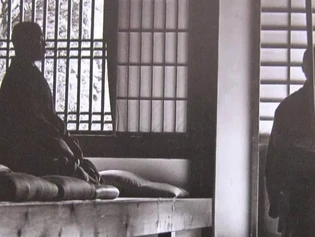Before choosing a teacher, you still have to familiarize yourself with different schools of Buddhism: Theravada, Mahayana, and Vajrayana (with Vajrayana you have to practice Mahayana first) by reading books, listening to dhamma talks, attending meditation sessions, contacting Buddhist centers in your area.
Don’t follow a lineage, follow a qualified teacher.
While choosing between Theravada and Mahayana you can study both. Perhaps, over time, one will prove more beneficial and you’ll choose that one. Don’t worry too much about it at the start.
Normally, the teacher you choose depends on the tradition that appeals to you. But sometimes the process works the other way around – you are drawn to a teacher first, through books, talks, and when you adopt the tradition the teacher represents.
Finding the right teacher may depend more on the sincerity of your practice than on outer circumstances.
Trust your intuition and your sense of timing.
Be sure to check out a prospective teacher carefully (google, ask to follow practitioners, contact the center) before you officially become a student. It is really important!
What to look for:
• Do they teach the Dharma according to the Buddha?
• Do they take refuge in the Three Jewels?
• Do they abide by the precepts?
• Can you find their real names?
• Recommendations from other teachers.
Theravada regards a teacher as a kalyana-mitra( Sanskrit: a good friend, spiritual friend). Essentially, he is a fellow traveler on the oath who advises you what direction you should go. Other than providing this type of input, the teacher has no special spiritual authority, aside from the fact that he may be more experienced than you. The words mentor and preceptor may be the best everyday English equivalents to describe this teaching role.
Tibetan Buddhism: the spiritual teacher has considerable authority over his disciples. Instead of merely witness to vows, he initiates his disciples, of whom strict obedience is expected. The life stories of many Buddhist texts illustrate this special teacher-student relationship.
In the Tibetan traditions, teachers come in several shapes and sizes, including the following:
1. Meditation instructors. These teachers provide expert guidance in developing and deepening your practice. They may be monks or nuns or merely experienced lay practitioners.
2. Lamas: These teachers are often, but not always, monks. Lamas have extensive meditation training and accomplishments and are revered by their disciples as the embodiment of wisdom and compassion.
3. Geshes: These teachers, who are usually, monks, have extensive academic training and are experts in interpreting and expounding on the scriptures.
When you accept someone as your spiritual teacher, you’re generally making a lifelong commitment. *You can alter or terminate your involvement.
Mahayana: practitioners regard as teacher or master as having considerable spiritual power and authority.
If you are serious about progressing finding a great teacher is invaluable.




